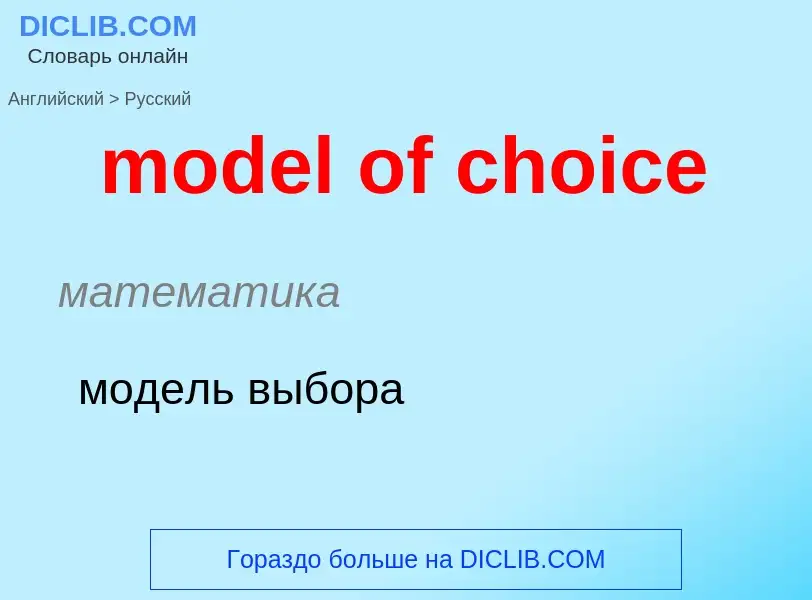Перевод и анализ слов искусственным интеллектом ChatGPT
На этой странице Вы можете получить подробный анализ слова или словосочетания, произведенный с помощью лучшей на сегодняшний день технологии искусственного интеллекта:
- как употребляется слово
- частота употребления
- используется оно чаще в устной или письменной речи
- варианты перевода слова
- примеры употребления (несколько фраз с переводом)
- этимология
model of choice - перевод на русский
математика
модель выбора
математика
двоичный выбор
парныйвыбор
Определение
.
Википедия
In economics, discrete choice models, or qualitative choice models, describe, explain, and predict choices between two or more discrete alternatives, such as entering or not entering the labor market, or choosing between modes of transport. Such choices contrast with standard consumption models in which the quantity of each good consumed is assumed to be a continuous variable. In the continuous case, calculus methods (e.g. first-order conditions) can be used to determine the optimum amount chosen, and demand can be modeled empirically using regression analysis. On the other hand, discrete choice analysis examines situations in which the potential outcomes are discrete, such that the optimum is not characterized by standard first-order conditions. Thus, instead of examining "how much" as in problems with continuous choice variables, discrete choice analysis examines "which one". However, discrete choice analysis can also be used to examine the chosen quantity when only a few distinct quantities must be chosen from, such as the number of vehicles a household chooses to own and the number of minutes of telecommunications service a customer decides to purchase. Techniques such as logistic regression and probit regression can be used for empirical analysis of discrete choice.
Discrete choice models theoretically or empirically model choices made by people among a finite set of alternatives. The models have been used to examine, e.g., the choice of which car to buy, where to go to college, which mode of transport (car, bus, rail) to take to work among numerous other applications. Discrete choice models are also used to examine choices by organizations, such as firms or government agencies. In the discussion below, the decision-making unit is assumed to be a person, though the concepts are applicable more generally. Daniel McFadden won the Nobel prize in 2000 for his pioneering work in developing the theoretical basis for discrete choice.
Discrete choice models statistically relate the choice made by each person to the attributes of the person and the attributes of the alternatives available to the person. For example, the choice of which car a person buys is statistically related to the person's income and age as well as to price, fuel efficiency, size, and other attributes of each available car. The models estimate the probability that a person chooses a particular alternative. The models are often used to forecast how people's choices will change under changes in demographics and/or attributes of the alternatives.
Discrete choice models specify the probability that an individual chooses an option among a set of alternatives. The probabilistic description of discrete choice behavior is used not to reflect individual behavior that is viewed as intrinsically probabilistic. Rather, it is the lack of information that leads us to describe choice in a probabilistic fashion. In practice, we cannot know all factors affecting individual choice decisions as their determinants are partially observed or imperfectly measured. Therefore, discrete choice models rely on stochastic assumptions and specifications to account for unobserved factors related to a) choice alternatives, b) taste variation over people (interpersonal heterogeneity) and over time (intra-individual choice dynamics), and c) heterogeneous choice sets. The different formulations have been summarized and classified into groups of models.

